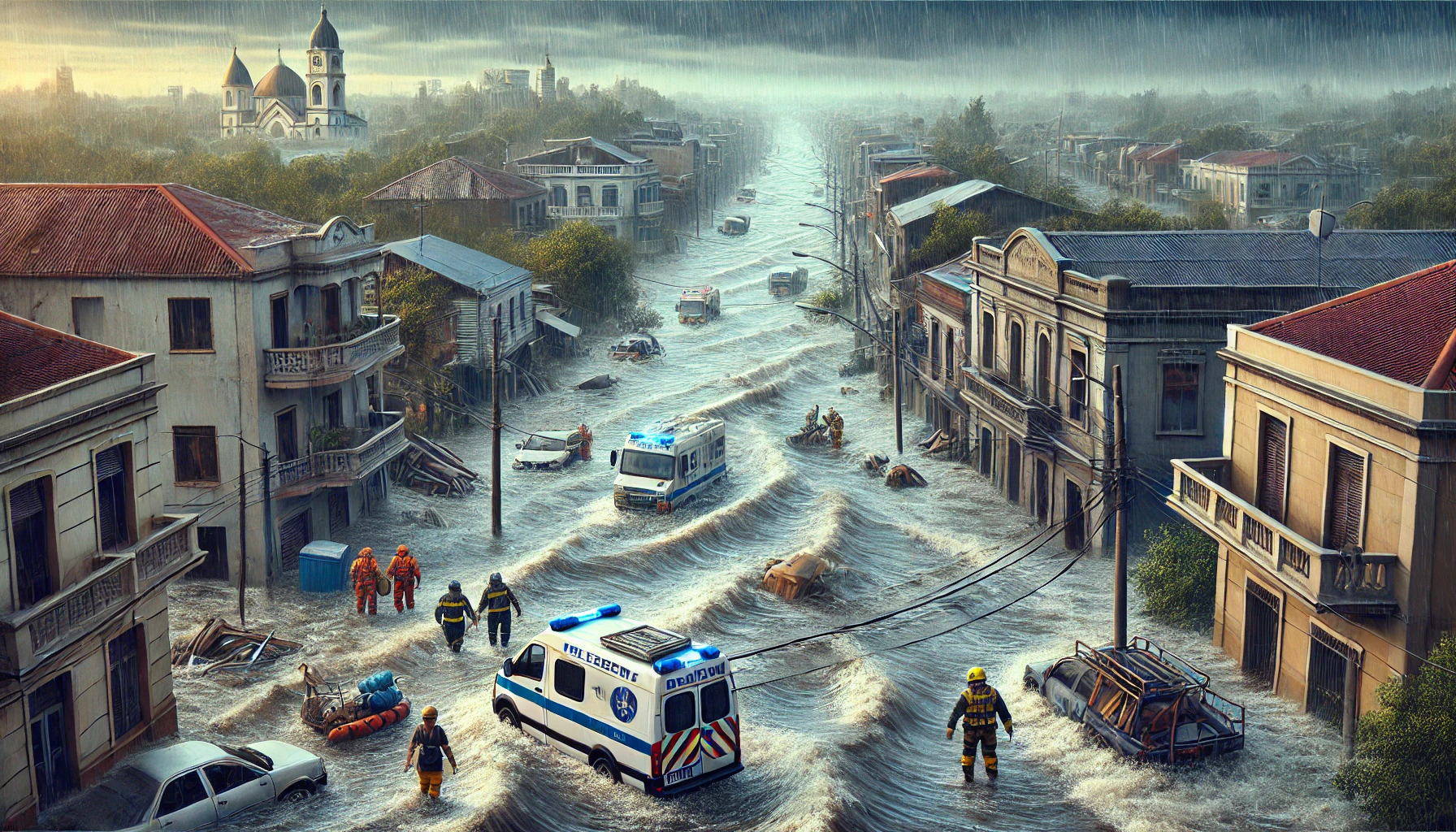Twin Flash Flood Disasters Expose Global Gaps in Early Warning Systems
In Texas, more than 100 people were confirmed dead and dozens remain missing after a tropical moisture-laden storm system unleashed 10–18 inches (25–46 cm) of rain in mere hours.

Two catastrophic flash flood disasters—one in the United States and the other in Nepal—within a matter of days have cast a glaring spotlight on the escalating risk of extreme hydrometeorological events and the urgent need for more effective early warning systems, particularly in vulnerable regions.
The Texas Hill Country was overwhelmed by an intense and sudden deluge on 4 July, while the Rasuwa district of Nepal was devastated on 7 July by a glacial lake outburst flood (GLOF), likely originating across the border in Tibet, China. Though thousands of kilometers apart and with different root causes, both disasters underscore the lethal nature of flash floods and the global urgency to enhance forecasting, communication, and preparedness.
Texas Hill Country: A Storm of Historic Proportions
In Texas, more than 100 people were confirmed dead and dozens remain missing after a tropical moisture-laden storm system unleashed 10–18 inches (25–46 cm) of rain in mere hours. The downpour rapidly overwhelmed the Guadalupe River basin in Kerr County, resulting in a catastrophic surge where the river rose 26 feet (nearly 8 meters) in just 45 minutes around 4 a.m. on 4 July.
Victims included many young campers who were asleep in nearby facilities, tragically caught unaware due to the absence of local sirens and the nighttime timing of the flash flood emergency.
The event was triggered by a mesoscale convective complex—a powerful system driven by the merging of tropical and northern storm moisture over central Texas. The region’s steep, rocky terrain, notorious for low water absorption, contributed significantly to the ferocity and speed of the flooding.
Although the U.S. National Weather Service had issued a flash flood watch 12 hours in advance and later a warning three hours before the event, the timing, combined with limited localized alerts, proved insufficient to save many lives.
Nepal’s Glacial Lake Outburst: A Climate Alarm
On 7 July, a separate flash flood in Nepal’s Rasuwa district resulted in at least seven deaths and 19 people missing, with infrastructure—including hydropower facilities and an important cross-border bridge—washed away. Unlike Texas, the trigger here was not rainfall but the sudden release of a supraglacial lake in the Tibet Autonomous Region of China.
The International Centre for Integrated Mountain Development (ICIMOD) confirmed that the lake, which began forming in December 2024, had expanded rapidly by June 2025, eventually bursting and triggering the downstream disaster.
In a concerning trend, glacial-origin floods—once thought to occur once every 5–10 years—have now struck the Hindu Kush Himalaya region three times in two months alone, including recent events in Afghanistan, Pakistan, and Nepal’s Mustang district.
ICIMOD warned that climate-driven temperature rise is accelerating the formation of unstable supraglacial lakes, with projections showing a threefold increase in GLOF risks by the end of the 21st century.
Flash Floods: A Global, Growing Threat
According to the World Meteorological Organization (WMO), flash floods account for nearly 85% of all flooding fatalities, killing over 5,000 people annually and causing economic losses exceeding $50 billion per year. Flash floods also have the highest mortality rate among flood types—more than riverine or coastal floods.
A global World Bank study estimates that 1.81 billion people—23% of the global population—are directly exposed to 1-in-100-year floods, with 89% living in low- and middle-income countries.
Historic flood events further reveal the scale of socioeconomic impact:
-
2020 South Asian Floods: Over 6,500 deaths, US$ 105 billion in damages.
-
2022 Pakistan Floods: Affected 33 million people, losses of US$ 40 billion.
-
2024 Europe, Middle East, Africa Floods: Estimated US$ 36 billion in damages.
Early Warnings for All: The WMO's Response
To address the growing threat, WMO is scaling up its “Early Warnings for All” initiative, placing flash flood prediction and response at the heart of disaster risk reduction strategies.
The Flash Flood Guidance System (FFGS), part of WMO’s Flood Forecasting Initiative, is operational in over 70 countries. It integrates satellite data, radar imagery, and high-resolution weather models to provide forecasters with early signals of imminent flash flood threats. The FFGS is underpinned by regional centres and national meteorological services that are trained to act on this guidance.
WMO is transitioning the FFGS into a Member-led, globally governed platform, working to ensure it is interoperable and fully integrated within national Multi-Hazard Early Warning Systems (MHEWS).
Capacity-building is also a major pillar: WMO has certified hundreds of experts under its Flash Flood Forecasting Competency Framework, ensuring that technology is supported by skilled human infrastructure.
Urgency in the Face of Climate Acceleration
Flash floods are not new, but their intensity and frequency are growing, driven by urbanization, land-use change, and above all, climate change. Warmer air holds more moisture, increasing the risk of high-intensity, short-duration rainfall events.
These latest floods in Texas and Nepal are a stark reminder that no country is immune. From the richest to the poorest, gaps in local alert systems, insufficient risk communication, and lack of preparedness can—and do—cost lives.
The challenge moving forward is not just developing the tools, but ensuring they are deployed, understood, and trusted—from urban centres to remote mountain villages. The WMO’s role in convening expertise, standardizing competency, and integrating technologies will be critical to meeting this challenge.










